 Toronto ranks among the worst for air quality as wildfire smoke blankets Eastern Canada and the US Midwest. In related news: a report on the climate-fire feedback loop; a call for a global response; and wildfire updates from Vancouver Island, the Yukon, and Newfoundland. In Forestry news: FSC Canada launches consultations on intact forests; BC’s Community Forests defend their model; the US may limit public input on federal land use; and a a call for more community forests in Scotland.
Toronto ranks among the worst for air quality as wildfire smoke blankets Eastern Canada and the US Midwest. In related news: a report on the climate-fire feedback loop; a call for a global response; and wildfire updates from Vancouver Island, the Yukon, and Newfoundland. In Forestry news: FSC Canada launches consultations on intact forests; BC’s Community Forests defend their model; the US may limit public input on federal land use; and a a call for more community forests in Scotland.
In Business news: The US Forest Service is investing in wood innovation; US Senators introduce a Forest Bioeconomy Act; the Trump Administration posts guidance on its tariff rollout; a BC Minister urges Ottawa to negotiate hard; Quebec’s Scierie St-Michel lumber mill suspends operations; Maine’s forest sector feels the tariff pain; Brazil wood exporters rush to beat the US deadline; and lumber futures hit a 3-year high. Meanwhile: a fire at Domtar’s Plymouth facility is extinguished; and Chartwell Resource Group and DWB Consulting are merging.
Finally, see inside the ruins of Oregon’s timber past at Vernonia’s ghost mill.
Kelly McCloskey, Tree Frog News


 BURNABY, B.C. – The United Steelworkers union (USW) District 3 and the USW Wood Council are calling on the federal government to take urgent action in response to the latest escalation in the softwood lumber trade dispute. Following the U.S. Department of Commerce’s decision to increase anti-dumping duties on Canadian softwood lumber exports to 20.56%, the USW is demanding immediate support for forestry workers and communities across the country. …“Our prime minister says softwood lumber is a priority in trade talks, but what forest workers need now is action,” said Scott Lunny, USW Western Canada Director. …In addition the USW is calling for a comprehensive support package for forest workers, including wage subsidies, loan guarantees for affected businesses and other targeted resources to support provinces, regional and local communities to sustain critical infrastructure and services through this unprecedented uncertainty.
BURNABY, B.C. – The United Steelworkers union (USW) District 3 and the USW Wood Council are calling on the federal government to take urgent action in response to the latest escalation in the softwood lumber trade dispute. Following the U.S. Department of Commerce’s decision to increase anti-dumping duties on Canadian softwood lumber exports to 20.56%, the USW is demanding immediate support for forestry workers and communities across the country. …“Our prime minister says softwood lumber is a priority in trade talks, but what forest workers need now is action,” said Scott Lunny, USW Western Canada Director. …In addition the USW is calling for a comprehensive support package for forest workers, including wage subsidies, loan guarantees for affected businesses and other targeted resources to support provinces, regional and local communities to sustain critical infrastructure and services through this unprecedented uncertainty.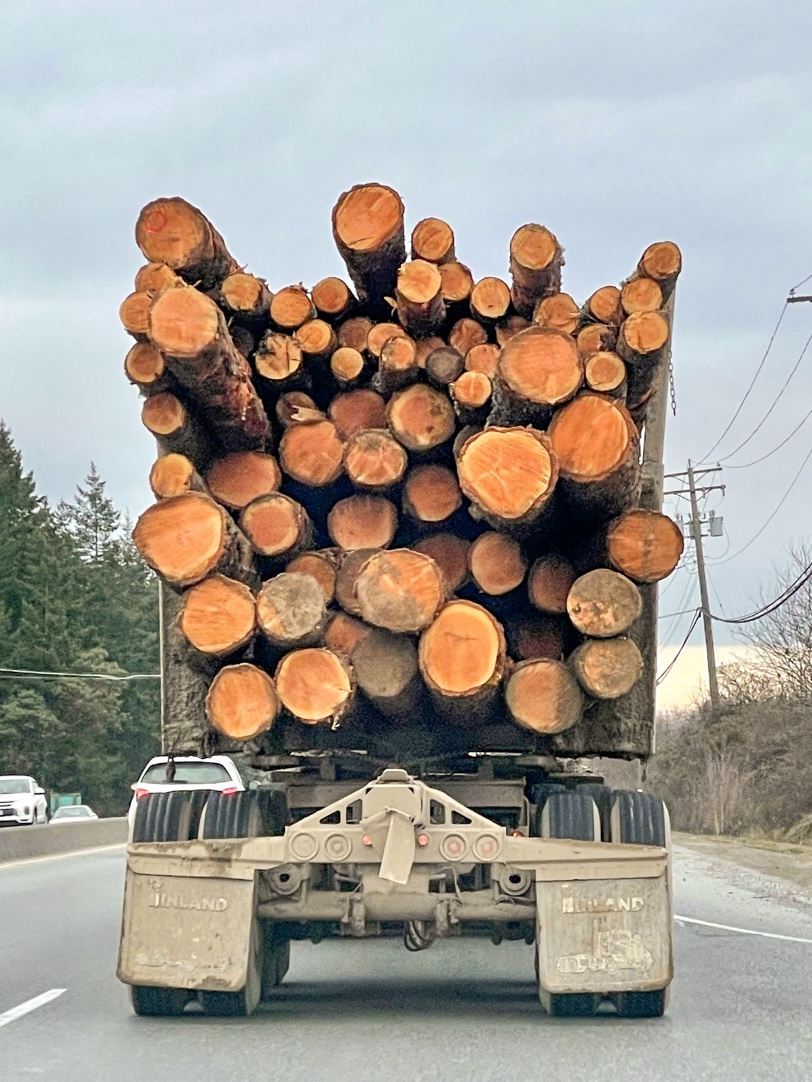 VICTORIA — The Council of Forest Industries wrote a letter to the New Democrats earlier this month, outlining more than a dozen proposals to rescue a struggling industry. “B.C.’s forest industry is in crisis,” wrote COFI President Kim Haakstad in the July 14 letter to Forests Minister Ravi Parmar. “Fibre availability is at historic lows, permitting systems are gridlocked, and investment is retreating in the face of prolonged uncertainty. The risk is not gradual decline — but accelerated facility closures, job losses, and the permanent erosion of forest industry capacity.” Haakstad was responding to Premier David Eby’s announcement of a “major project” to restore the industry in a speech to this year’s COFI’s convention. …I asked the government last week for a response to the proposals set out in the COFI letter. I got back a general statement from Parmar, which pretty much brushed aside the notion of a crisis in the industry.
VICTORIA — The Council of Forest Industries wrote a letter to the New Democrats earlier this month, outlining more than a dozen proposals to rescue a struggling industry. “B.C.’s forest industry is in crisis,” wrote COFI President Kim Haakstad in the July 14 letter to Forests Minister Ravi Parmar. “Fibre availability is at historic lows, permitting systems are gridlocked, and investment is retreating in the face of prolonged uncertainty. The risk is not gradual decline — but accelerated facility closures, job losses, and the permanent erosion of forest industry capacity.” Haakstad was responding to Premier David Eby’s announcement of a “major project” to restore the industry in a speech to this year’s COFI’s convention. …I asked the government last week for a response to the proposals set out in the COFI letter. I got back a general statement from Parmar, which pretty much brushed aside the notion of a crisis in the industry.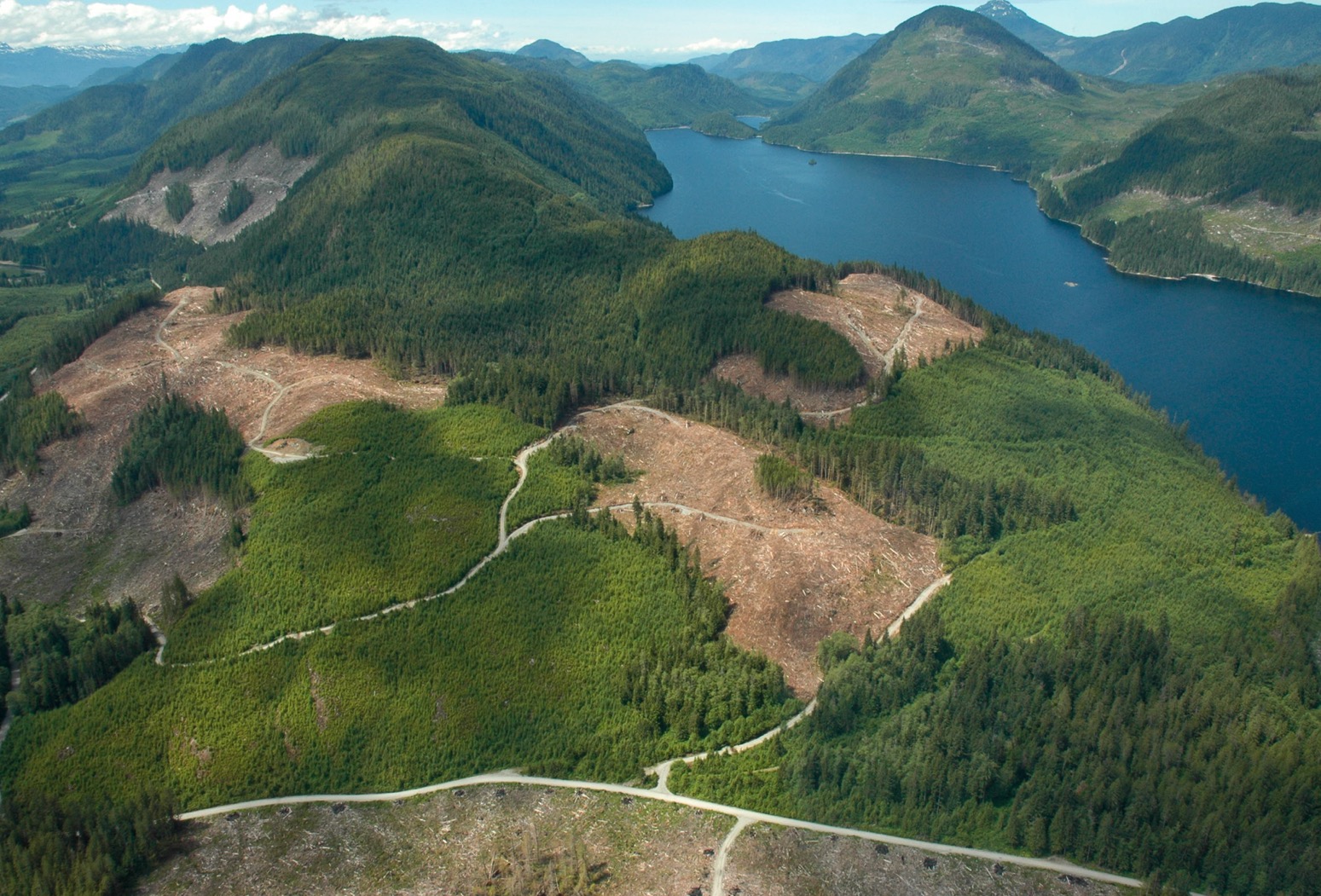 Campbell River Mayor Kermit Dahl sent an open letter to Premier David Eby, calling for immediate action to address issues within B.C.’s coastal forestry sector. Dahl warns continued inaction could result in further mill closures, job losses and the collapse of the coastal forestry industry. According to Dahl, coastal harvest volumes have dropped by over 40 per cent since 2019, with more than 5,400 direct forestry jobs lost since 2022. The 2025–26 budget projects a harvest of 32 million cubic metres … an estimated $275 million in lost revenue. The mayor says Premier Eby pledged to “protect jobs and the economy” when reshuffling his cabinet and says “those words ring hollow for thousands of coastal forestry workers watching their industry collapse—… from policy paralysis and regulatory misfires.” Dahl argues the crisis is not caused by … internal delay. “When harvest approvals that once took six months now take two years or more, that’s not a tariff issue—it’s a made-in-B.C. problem,” Dahl says.
Campbell River Mayor Kermit Dahl sent an open letter to Premier David Eby, calling for immediate action to address issues within B.C.’s coastal forestry sector. Dahl warns continued inaction could result in further mill closures, job losses and the collapse of the coastal forestry industry. According to Dahl, coastal harvest volumes have dropped by over 40 per cent since 2019, with more than 5,400 direct forestry jobs lost since 2022. The 2025–26 budget projects a harvest of 32 million cubic metres … an estimated $275 million in lost revenue. The mayor says Premier Eby pledged to “protect jobs and the economy” when reshuffling his cabinet and says “those words ring hollow for thousands of coastal forestry workers watching their industry collapse—… from policy paralysis and regulatory misfires.” Dahl argues the crisis is not caused by … internal delay. “When harvest approvals that once took six months now take two years or more, that’s not a tariff issue—it’s a made-in-B.C. problem,” Dahl says. In British Columbia’s forestry sector, logging and trucking businesses are beginning to take a closer look at how they manage and report fuel use. While the Motor Fuel tax rules themselves haven’t changed, recent enforcement has prompted many operators to reassess long-standing practices — particularly when it comes to using coloured fuel in mixed on- and off-highway operations. For businesses that rely on marked fuel in remote areas or cross between forest roads and public highways, assessments are surfacing more frequently and creating uncertainty around compliance. If you’ve received a notice — or aren’t sure whether your operations could be affected — there are steps you can take to reduce the impact and protect your business. …Increased enforcement of the B.C. Motor Fuel Tax rules has created a layer of complexity that many forestry businesses weren’t prepared for. …the consequences of misunderstanding the rules, especially around fuel eligibility, have become more serious.
In British Columbia’s forestry sector, logging and trucking businesses are beginning to take a closer look at how they manage and report fuel use. While the Motor Fuel tax rules themselves haven’t changed, recent enforcement has prompted many operators to reassess long-standing practices — particularly when it comes to using coloured fuel in mixed on- and off-highway operations. For businesses that rely on marked fuel in remote areas or cross between forest roads and public highways, assessments are surfacing more frequently and creating uncertainty around compliance. If you’ve received a notice — or aren’t sure whether your operations could be affected — there are steps you can take to reduce the impact and protect your business. …Increased enforcement of the B.C. Motor Fuel Tax rules has created a layer of complexity that many forestry businesses weren’t prepared for. …the consequences of misunderstanding the rules, especially around fuel eligibility, have become more serious.

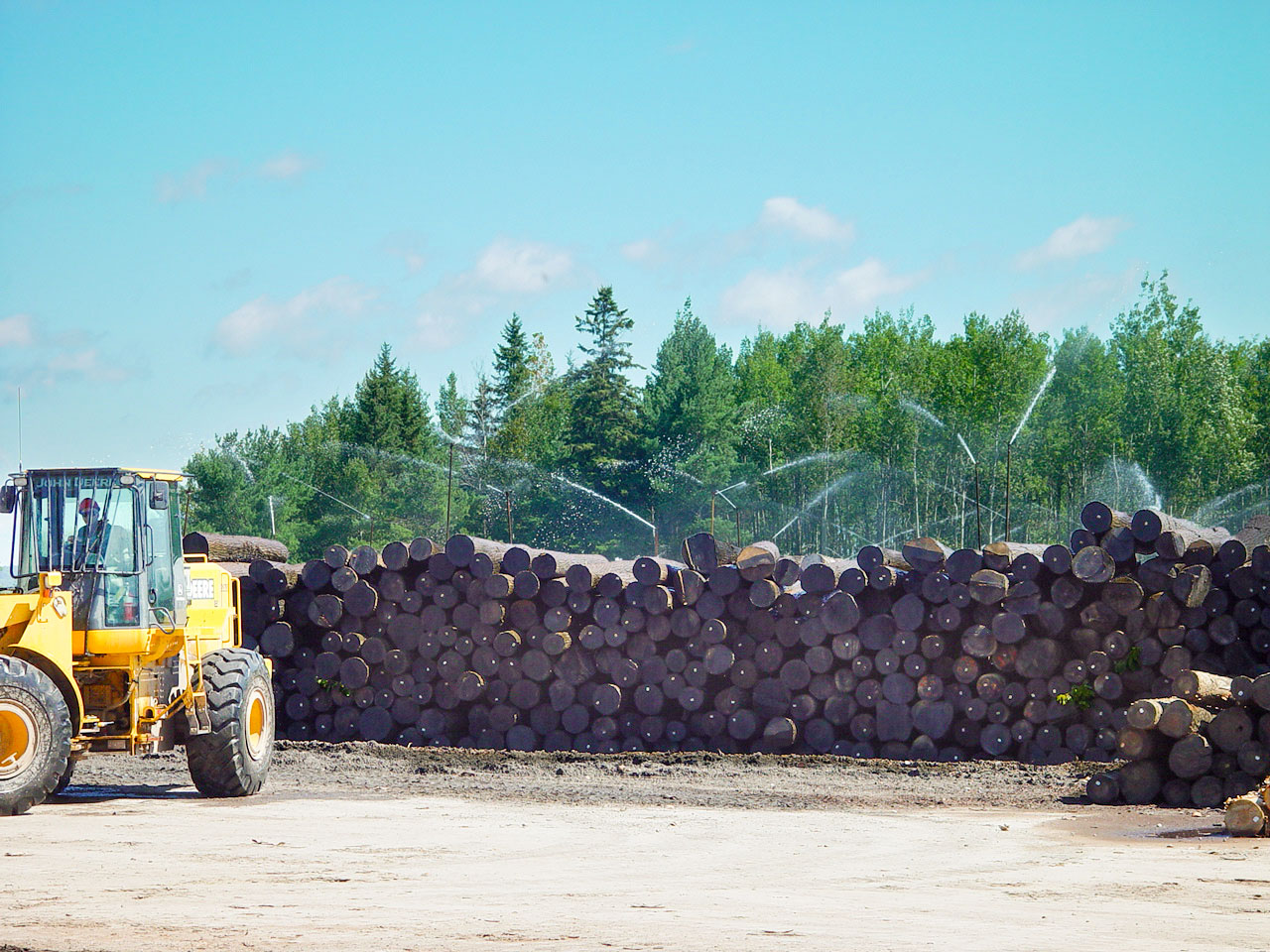 Mushkegowuk-James Bay MPP Guy Bourgouin is calling on the province to take immediate action to protect Ontario’s forestry sector in the wake of new U.S. tariffs on Canadian lumber. Bourgouin said the impact of the tariffs imposed by U.S. president Donald Trump could be devastating for northern communities that depend on the industry. “The anti-dumping tariffs imposed by Trump will devastate our lumber industry. Condemning Trump’s actions isn’t enough. We saw it with the auto sector, with steel, and now with lumber — the Premier’s ‘wait and see’ approach is leaving thousands of workers vulnerable to layoffs.” Bourgouin criticized the Ford government for failing to present a concrete strategy, calling their approach “an afterthought” for northern Ontario’s economy. …Ontario NDP party argues that using Ontario-produced wood could tackle multiple challenges at once, safeguarding forestry jobs, boosting local economies, and addressing the province’s housing shortage with “made-in-Ontario” solutions.
Mushkegowuk-James Bay MPP Guy Bourgouin is calling on the province to take immediate action to protect Ontario’s forestry sector in the wake of new U.S. tariffs on Canadian lumber. Bourgouin said the impact of the tariffs imposed by U.S. president Donald Trump could be devastating for northern communities that depend on the industry. “The anti-dumping tariffs imposed by Trump will devastate our lumber industry. Condemning Trump’s actions isn’t enough. We saw it with the auto sector, with steel, and now with lumber — the Premier’s ‘wait and see’ approach is leaving thousands of workers vulnerable to layoffs.” Bourgouin criticized the Ford government for failing to present a concrete strategy, calling their approach “an afterthought” for northern Ontario’s economy. …Ontario NDP party argues that using Ontario-produced wood could tackle multiple challenges at once, safeguarding forestry jobs, boosting local economies, and addressing the province’s housing shortage with “made-in-Ontario” solutions.



 Canada has trees… But …Ottawa is at odds with a slew of environmental groups over what that means. [They] issued a
Canada has trees… But …Ottawa is at odds with a slew of environmental groups over what that means. [They] issued a  …The pressure to balance local benefits and profitability is something community forests must continuously navigate. A
…The pressure to balance local benefits and profitability is something community forests must continuously navigate. A 
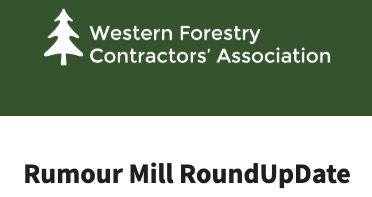 Years of drought combined with persistent wildfire, some of it burning underground over winter, are causing forests in B.C.’s north east to fall down. Having had the roots and organic soils that had held them up burned away these often green trees now form a dense ground fuel load for future fires. The fallen trees also form a jack-straw of branches and boles that will act as an abatis in the face of fire crews. This has fire specialists and ecologists in the Fort Nelson Fire Zone worried. “With this fuel type, another concern is the multi-year impacts of having this much fuel on the ground,” says Eric Kopetski BCWS Fire Behaviour Analyst. The Fort Nelson Fire Zone has been dealing with drought and fire for years with the Fort Nelson Complex now covering 4 million hectares including 25 fires and 350,000 hectares burned this year. Distance, terrain and fire tenacity already pose challenges to fire crews.
Years of drought combined with persistent wildfire, some of it burning underground over winter, are causing forests in B.C.’s north east to fall down. Having had the roots and organic soils that had held them up burned away these often green trees now form a dense ground fuel load for future fires. The fallen trees also form a jack-straw of branches and boles that will act as an abatis in the face of fire crews. This has fire specialists and ecologists in the Fort Nelson Fire Zone worried. “With this fuel type, another concern is the multi-year impacts of having this much fuel on the ground,” says Eric Kopetski BCWS Fire Behaviour Analyst. The Fort Nelson Fire Zone has been dealing with drought and fire for years with the Fort Nelson Complex now covering 4 million hectares including 25 fires and 350,000 hectares burned this year. Distance, terrain and fire tenacity already pose challenges to fire crews. 



 Vic Fedeli, MPP for Nipissing, announced the Ontario government is investing $2,874,898 through the Skills Development Fund Training Stream to The Canadian Institute of Forestry to support 75 workers across Northern Ontario get the skills they need to land good-paying, in-demand jobs in forestry, logging, and agriculture-related services. …“As we navigate a shifting economic landscape, disrupted by U.S. tariffs, we remain laser-focused on protecting Ontario workers and job seekers,” said MPP Fedeli. “That’s why we’re investing over $2.8 million to support a project by the Canadian Institute of Forestry, in partnership with College Boréal, to train workers for in-demand roles in the forestry and resource sector, helping grow Northern Ontario’s economy.” …”These programs are equipping the next generation of forest professionals and ensuring the continued vitality of our forestry communities,” said Ken Farr, Interim Executive Director, Canadian Institute of Forestry.
Vic Fedeli, MPP for Nipissing, announced the Ontario government is investing $2,874,898 through the Skills Development Fund Training Stream to The Canadian Institute of Forestry to support 75 workers across Northern Ontario get the skills they need to land good-paying, in-demand jobs in forestry, logging, and agriculture-related services. …“As we navigate a shifting economic landscape, disrupted by U.S. tariffs, we remain laser-focused on protecting Ontario workers and job seekers,” said MPP Fedeli. “That’s why we’re investing over $2.8 million to support a project by the Canadian Institute of Forestry, in partnership with College Boréal, to train workers for in-demand roles in the forestry and resource sector, helping grow Northern Ontario’s economy.” …”These programs are equipping the next generation of forest professionals and ensuring the continued vitality of our forestry communities,” said Ken Farr, Interim Executive Director, Canadian Institute of Forestry.

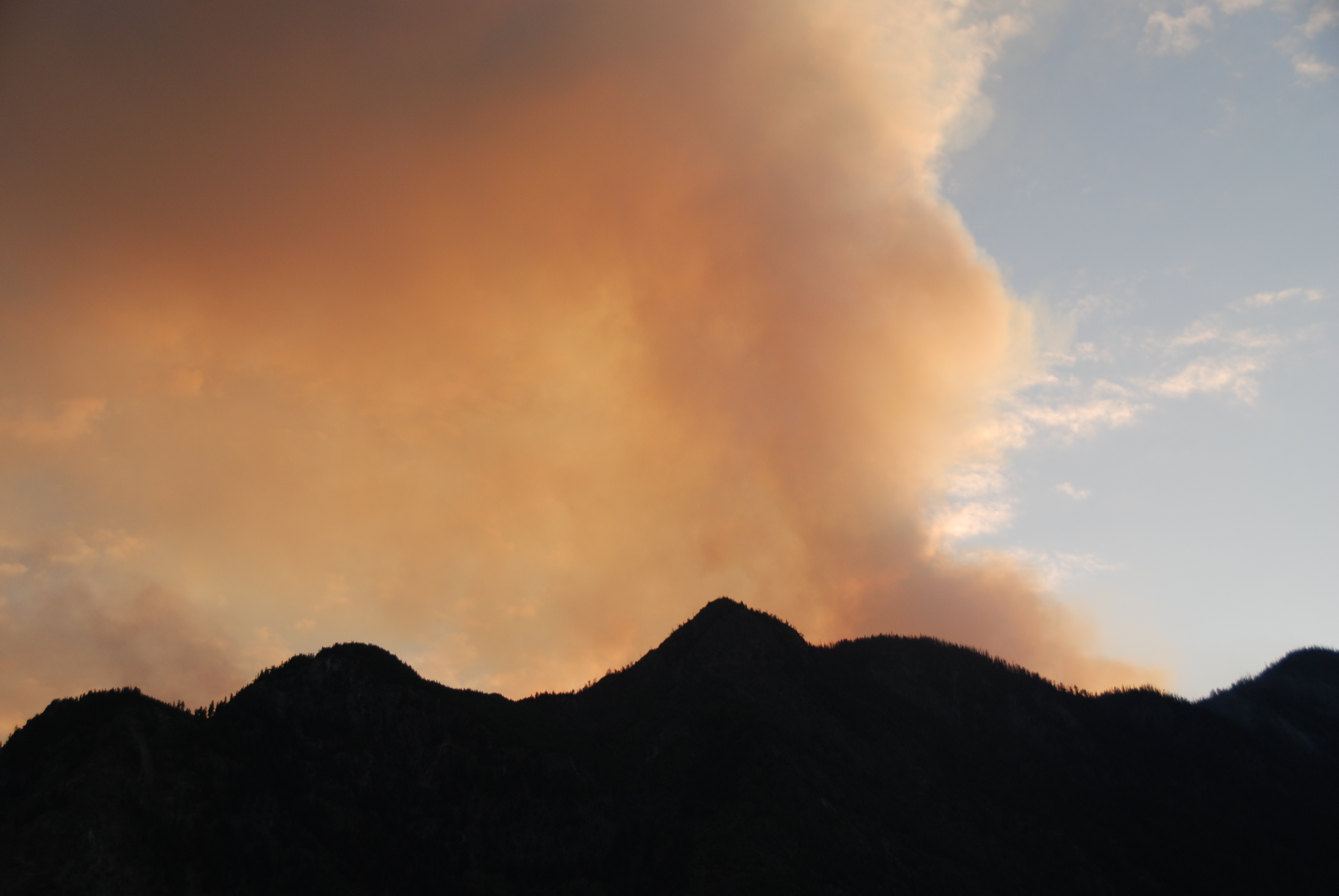 Thousands of lightning strikes have been recorded in California recently as portions of the state gear up for more storms, bringing with them potential wildfires. The state’s northern half saw 1,681 lightning strikes between Sunday, July 27, and Monday, July 28, Cal Fire reported, sparking 23 wildfires. Cal Fire units Lassen-Modoc, Shasta-Trinity, and Siskiyou responded to 14 new fires, none of which grew significantly, Cal Fire said as of July 28. Yet, this month, more lightning strikes in short periods have occurred in the state. The U.S. Forest Service Shasta-Trinity National Forest reported on July 26 that Northern California experienced 18,863 lightning strikes due to storms in the area the evening before. …The National Interagency Fire Center has tracked the number of fires in Northern California and Southern California caused by lightning in recent years, showing that thousands of fires in the state and nationwide are caused by nature.
Thousands of lightning strikes have been recorded in California recently as portions of the state gear up for more storms, bringing with them potential wildfires. The state’s northern half saw 1,681 lightning strikes between Sunday, July 27, and Monday, July 28, Cal Fire reported, sparking 23 wildfires. Cal Fire units Lassen-Modoc, Shasta-Trinity, and Siskiyou responded to 14 new fires, none of which grew significantly, Cal Fire said as of July 28. Yet, this month, more lightning strikes in short periods have occurred in the state. The U.S. Forest Service Shasta-Trinity National Forest reported on July 26 that Northern California experienced 18,863 lightning strikes due to storms in the area the evening before. …The National Interagency Fire Center has tracked the number of fires in Northern California and Southern California caused by lightning in recent years, showing that thousands of fires in the state and nationwide are caused by nature.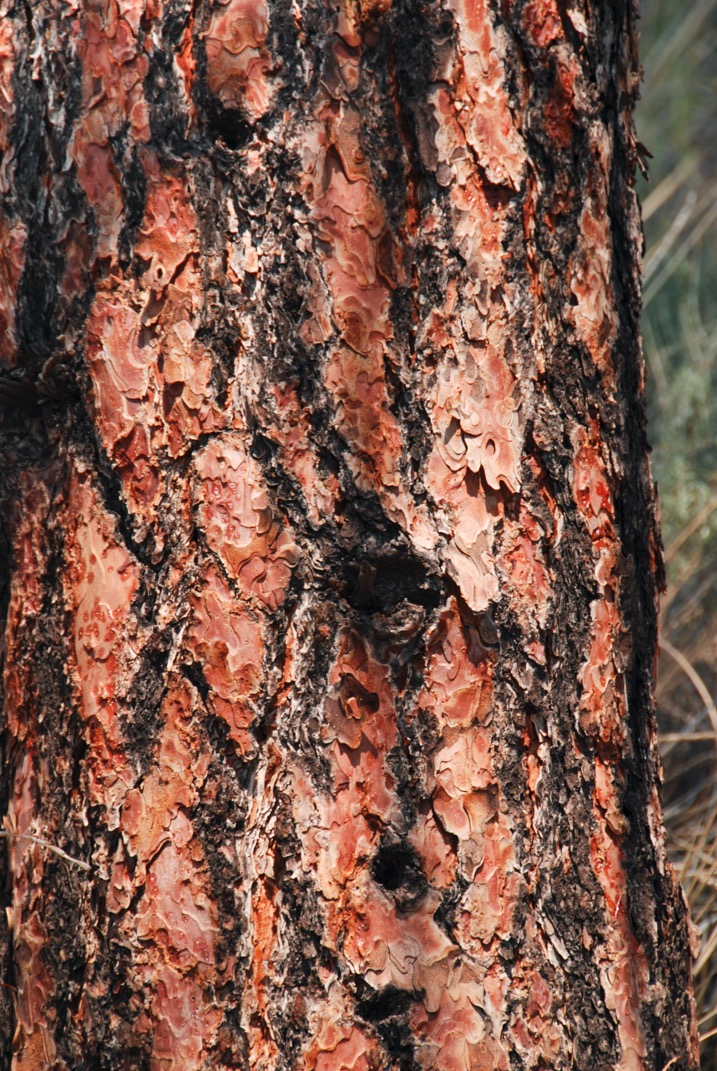 MISSOULA — in the Blue Mountain area in Missoula, trees with a blue ring painted around them are slated for removal as part of a larger plan to restore the forest to its pre-colonial state — a state that was more fire-resistant. The plan involves several agencies collaborating to achieve this goal. …The Blue Mountain Area consists of land owned by the U.S. Forest Service, Missoula County, the Montana Department of Natural Resources and Conservation (DNRC) and private land owners. They will implement forest treatments to change the forest, as the current state of it is extremely fire-prone. …The ultimate goal of all the agencies is to create open areas with ponderosa pine scattered about. To achieve this, agencies are looking at a combination of mechanized and non-mechanized vegetation management; clearing the forest floor, often through prescribed burning, and removing species like Douglas fir.
MISSOULA — in the Blue Mountain area in Missoula, trees with a blue ring painted around them are slated for removal as part of a larger plan to restore the forest to its pre-colonial state — a state that was more fire-resistant. The plan involves several agencies collaborating to achieve this goal. …The Blue Mountain Area consists of land owned by the U.S. Forest Service, Missoula County, the Montana Department of Natural Resources and Conservation (DNRC) and private land owners. They will implement forest treatments to change the forest, as the current state of it is extremely fire-prone. …The ultimate goal of all the agencies is to create open areas with ponderosa pine scattered about. To achieve this, agencies are looking at a combination of mechanized and non-mechanized vegetation management; clearing the forest floor, often through prescribed burning, and removing species like Douglas fir.
 New research highlights concern from across Scotland about the role of industrial forestry corporations and asset management organisations who increasingly dominate the ownership and management of Scotland’s forests. The research concludes that more community ownership and management of woodlands, and more diverse ownership of forests across Scotland would increase community wealth and lead to greater environmental benefits, as well as producing more actively managed forests in Scotland. Three new discussion papers … analyse the effectiveness and impact of industrial forestry on local areas as well as for meeting national carbon and timber targets. Industrial forestry refers to predominantly single species, mostly unmanaged, Sitka Spruce forest, contrasting with more climatically resilient, sustainable, mixed species forestry. The papers recognise that, while mixed productive forestry has an important part to play in reaching Net Zero and delivering economic and social opportunities, basic assumptions about the benefits of industrial forestry can be questionable.
New research highlights concern from across Scotland about the role of industrial forestry corporations and asset management organisations who increasingly dominate the ownership and management of Scotland’s forests. The research concludes that more community ownership and management of woodlands, and more diverse ownership of forests across Scotland would increase community wealth and lead to greater environmental benefits, as well as producing more actively managed forests in Scotland. Three new discussion papers … analyse the effectiveness and impact of industrial forestry on local areas as well as for meeting national carbon and timber targets. Industrial forestry refers to predominantly single species, mostly unmanaged, Sitka Spruce forest, contrasting with more climatically resilient, sustainable, mixed species forestry. The papers recognise that, while mixed productive forestry has an important part to play in reaching Net Zero and delivering economic and social opportunities, basic assumptions about the benefits of industrial forestry can be questionable.

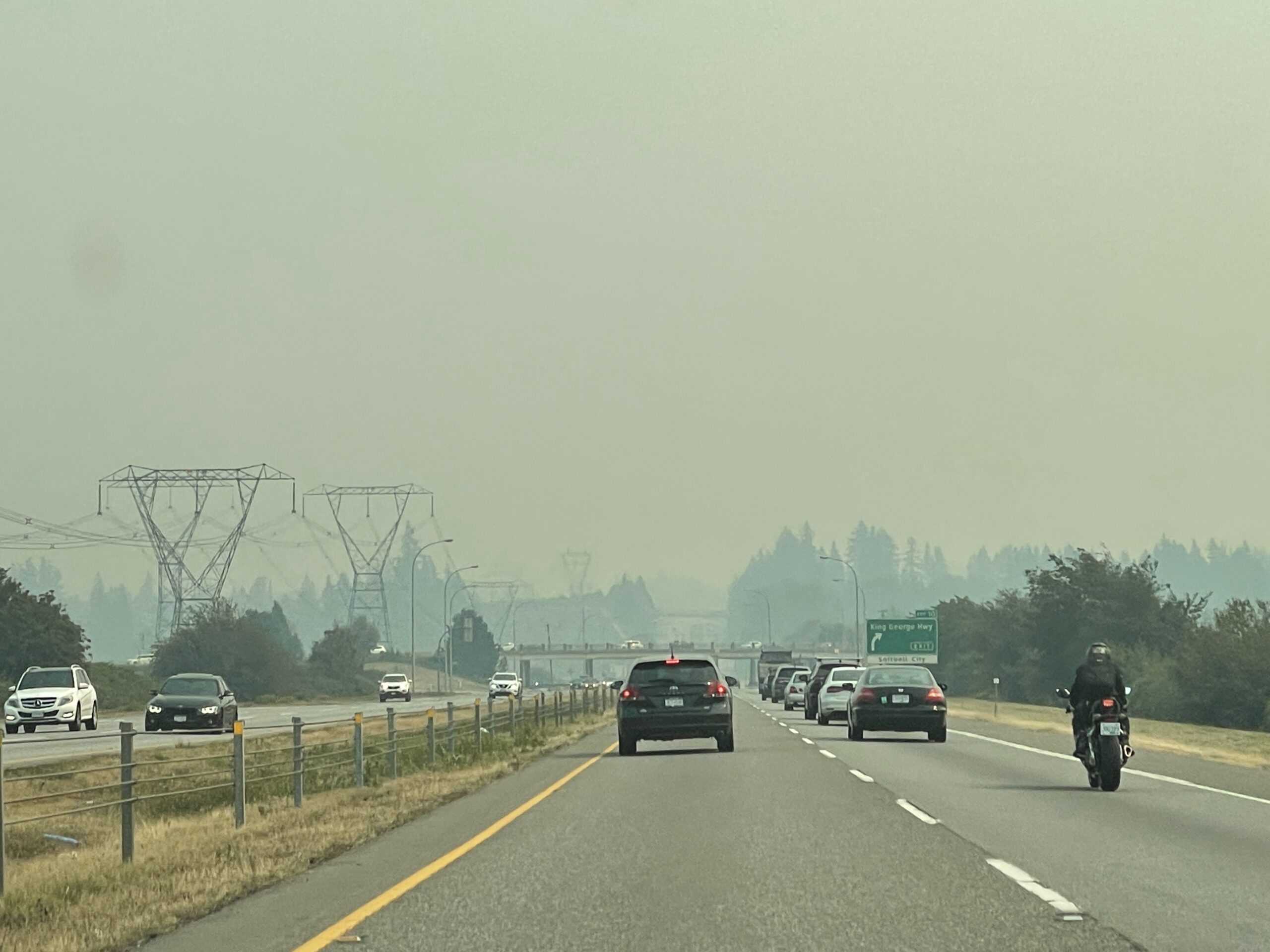 KENORA — Across Northwestern Ontario, the public is being urged to limit time outdoors due to “extremely high levels of air pollution.” The poor air quality is being caused by smoke from forest fires in the Prairies, according to an air quality warning issued by Environment Canada and the Province of Ontario Tuesday morning. The warning extends from east of Marathon — including Biigtigong Nishnaabeg — west to the Manitoba border and extends as far north as to include communities like Wunnumin Lake, Muskrat Dam and Deer Lake. Poor air quality is expected to persist through Thursday for most areas, according to the updated warning, extending the expected duration.
KENORA — Across Northwestern Ontario, the public is being urged to limit time outdoors due to “extremely high levels of air pollution.” The poor air quality is being caused by smoke from forest fires in the Prairies, according to an air quality warning issued by Environment Canada and the Province of Ontario Tuesday morning. The warning extends from east of Marathon — including Biigtigong Nishnaabeg — west to the Manitoba border and extends as far north as to include communities like Wunnumin Lake, Muskrat Dam and Deer Lake. Poor air quality is expected to persist through Thursday for most areas, according to the updated warning, extending the expected duration. FREMONT, Neb. – Following the dust explosion in Fremont that left one man and two children dead, First Alert 6 spoke with a fire safety expert to explain how that can happen. Fire Safety Expert Sherrie Wilson said a normal fire needs three components: oxygen, fuel, and an ignition source. But with a dust explosion, you need two more components: confinement and dispersion. Wilson said all of that together can cause rapid combustion. Eyewitnesses said they saw multiple explosions at Horizon Biofuels. Wilson said that it is not surprising. She explained that when the first explosion disrupted the dust in a confined space, it made the next explosion even larger. OSHA has standards to prevent dust hazards, but she feels it is not always taken seriously, she said. …
FREMONT, Neb. – Following the dust explosion in Fremont that left one man and two children dead, First Alert 6 spoke with a fire safety expert to explain how that can happen. Fire Safety Expert Sherrie Wilson said a normal fire needs three components: oxygen, fuel, and an ignition source. But with a dust explosion, you need two more components: confinement and dispersion. Wilson said all of that together can cause rapid combustion. Eyewitnesses said they saw multiple explosions at Horizon Biofuels. Wilson said that it is not surprising. She explained that when the first explosion disrupted the dust in a confined space, it made the next explosion even larger. OSHA has standards to prevent dust hazards, but she feels it is not always taken seriously, she said. … FREMONT, Neb. – Two days after a horrific explosion at a biofuels plant left a man and two girls dead, the state fire marshal told First Alert 6 the incident started with a dust fire — and was an accident. “A preliminary investigation indicates an accidental dust explosion occurred during the manufacturing process. Additional investigation efforts are currently impeded due to the instability of the structure,” the Nebraska Fire Marshal agency said in a statement Thursday afternoon. The state has completed its initial investigation of the incident at Horizon Biofuels, which manufactures wood pellets and animal bedding. Occupational Safety and Health Administration , however, remains at the scene and must — by law — complete its investigation within six months. The
FREMONT, Neb. – Two days after a horrific explosion at a biofuels plant left a man and two girls dead, the state fire marshal told First Alert 6 the incident started with a dust fire — and was an accident. “A preliminary investigation indicates an accidental dust explosion occurred during the manufacturing process. Additional investigation efforts are currently impeded due to the instability of the structure,” the Nebraska Fire Marshal agency said in a statement Thursday afternoon. The state has completed its initial investigation of the incident at Horizon Biofuels, which manufactures wood pellets and animal bedding. Occupational Safety and Health Administration , however, remains at the scene and must — by law — complete its investigation within six months. The 

